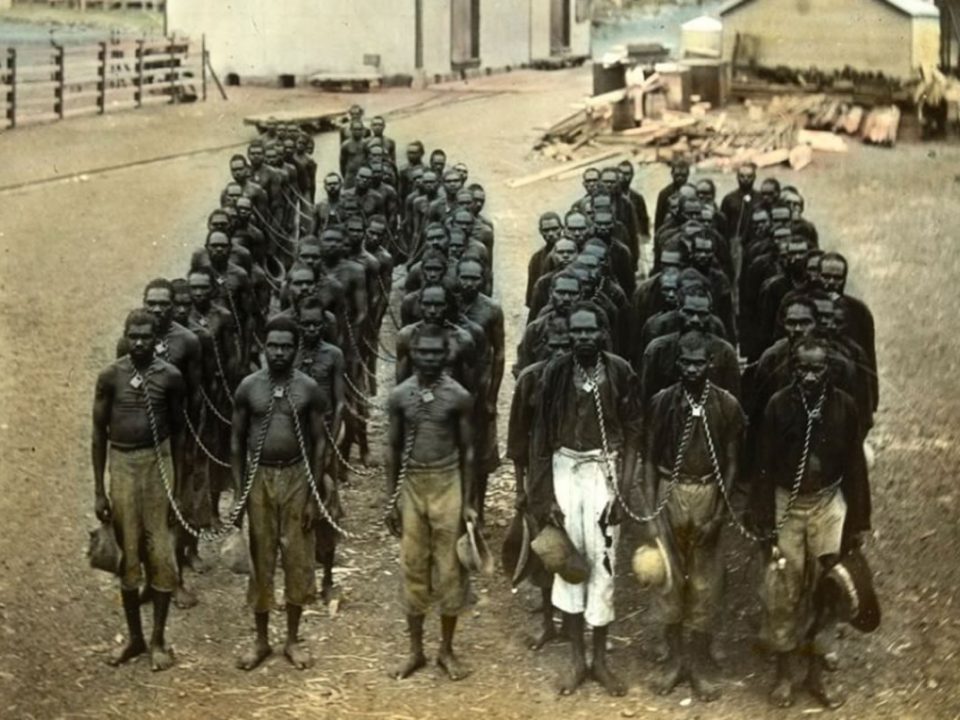The colonisation of Australia by Europeans had a massive negative impact on a peoples and culture that has existed for over 50,000 years.
The first settlers brought diseases that wiped out large numbers of Aboriginal people, as they had no immunity to European diseases. Many of the survivors existed at starvation levels, as they were denied access to their traditional hunting grounds by the invaders. Physical violence against Aboriginal people was widespread. The abduction of Aboriginal women and children for both economic misuse and sexual abuse was common. Racism was endemic.
A second phase of traumas occurred when governments started sending Aboriginal people to native reserves, which were in fact sub-standard camps for people dislocated from their own country. Aboriginal people were prevented from leaving these reserves by law. This policy was part of the infamous 1905 Aborigines Act of Western Australia, which subjected Aboriginal people to tyrannical control. It gave a white Chief Protector legal guardianship over all Aboriginal children.
Chief Protector Mr A O Neville developed a plan for setting up ‘native settlements’, run by the government, where Aboriginal children taken from their parents would be educated and trained for unskilled occupations. He also intended to ‘breed out’ Aboriginality through inter-marriage within the white community.
A cornerstone of these policies was the belief that Aboriginal people are ‘intellectually inferior’ to white people.
Carrolup, located 40 kilometres from the South West Australian town of Katanning, was one of the native settlements established by Mr. Neville. The Settlement was opened in 1915, but was closed in 1922. It was re-opened in 1939.
Pertinent blog posts:
The Impact of Colonisation on Aboriginal People: Control of Indigenous people was facilitated by three main types of power abuse or violence—overt physical violence, covert structural violence, and psychosocial domination.
The Control of Aboriginal People: 1905 Aborigines Act: The Act set up bureaucratic and legal mechanisms to control Aboriginal people, enforce the assimilation of their children, and impact on the most personal aspects of their lives.
Mr Neville: Removing Aboriginal Children from Their Family: Policies were introduced and maintained despite knowing that Aboriginal people hated being institutionalised, and that they had a tremendous affection for their children.
Racism and Social Darwinism: Eugenicists advocated a system that would allow the ‘more suitable races or ‘strains of blood’ a better chance of prevailing speedily over the ‘less suitable’.
Historical Trauma: As it was not addressed at the time, this trauma (and associated grief) have been passed down unwittingly through the generations by peoples’ behaviours and thought patterns.
You can also read excerpts from my book Connection: Aboriginal Child Artists Captivate Europe in these blog posts:
Facets of Colonisation: ‘… Aboriginal children, often as young as ten years of age, were regularly stolen to work in the pastoral and pearling industries, where they were indentured as unpaid and uneducated apprentices.’
Facets of Colonisation, Part 2: The Aborigines Act 1905 laid the basis for the development of a repressive and coercive state control over Aboriginal people in Western Australia.
Facets of Colonisation, Part 3: Aboriginal children were taken from their parents and sent to live on government-run native settlements, where they were to be educated and trained for unskilled occupations, e.g., domestic servants.
Carrolup Native Settlement: ‘Parents are also concerned at the prospect of losing their children to the control of Settlement staff—in the Settlement, children are taught to reject their parents and their way of life.’


